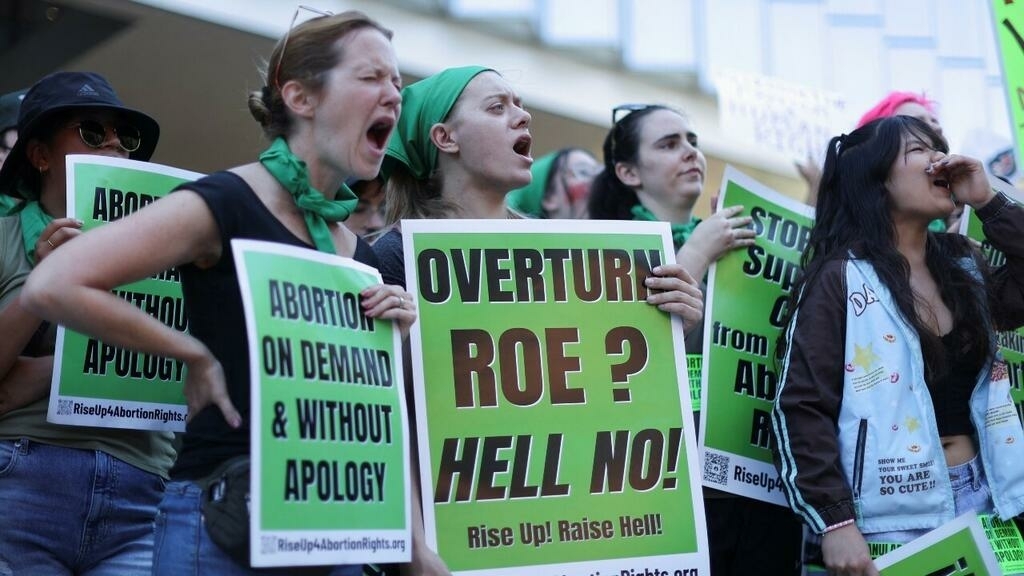First modification:
Almost 50 years after this right was legalized after the historic case of ‘Roe vs. Wade’ in 1973, the Supreme Court of the United States decided to overturn it in a very controversial and historic decision. The legalization of abortion in that year marked the arrival of a change in the safety and health of tens of thousands of women in this North American nation, but the pressure exerted for decades by anti-abortion groups to revoke this right has had an effect.
It is a decision as historic as it is controversial. The suppression of the right to abortion in the United States on June 24 represents an unprecedented change in the history of this country. An issue that has raised the alarm of numerous social and feminist groups in the face of what seems to be a regression of basic rights and that has increased the controversy surrounding the Supreme Court of the nation, which currently has a markedly conservative character.
To better understand a decision of this caliber, it is essential to delve into the history of how the right to abortion was achieved in the United States and how from that moment numerous groups opposed to it were mobilized to try to overthrow it.
A right obtained after decades of struggle
As in most of the planet, abortion was prohibited in the United States for decades for religious and moral reasons, although it was practiced clandestinely under appalling conditions. However, it is not possible to speak of the struggle for free abortion until the arrival of the 20th century and, specifically, the 50s and 60s of that century.
Around that time, numerous feminist groups and human rights defenders began to organize so that abortion began to be free. An option that guaranteed the health and safety of women.
These movements always encountered strong opposition from the Catholic and Protestant Churches and from the most conservative institutions. But in the 1960s, cases like Sherri Finkbine, a woman who was forced to travel to Sweden to have an abortion because the fetus was malformed, or Gerri Santoro, who died after having an illegal abortion in poor conditions, raised awareness in a part of society, which began to mobilize in favor of this right.
The case ‘Roe vs. Wade’ as a fundamental point
some states they began to partially lift restrictions on abortion, and only a few completely. Until in 1971 came the case of ‘Roe v. Wade’. In it, Norma McCorvey, a young Texas mother who was prevented from aborting her third pregnancy by strict laws in her state, filed a lawsuit against local District Attorney Henry Wade.
McCorvey appeared in court for the Northern District of Texas under the pseudonym “Jane Roe” and the ruling proved her right. After that, the state of Texas appealed to the Supreme Court, which returned to resolve the controversy in favor of McCorvey in 1973 with 7 votes in favor and 2 against.
The sentence was historic because it legislated that abortion could not be prohibited during the first trimester of pregnancy, since that violated the woman’s right to privacy, something that allowed abortion in that space without the states intervening. The High Court classified the right to voluntary interruption of pregnancy as “fundamental” and this caused the laws at the federal level to change.
The importance of this case was fundamental. Before ‘Roe vs. Wade’, in 30 of the 50 states that make up the United States, abortion was completely illegal. In another 16, it was conditioned to certain cases such as rape or danger of death to the mother or fetus. And only in 4, it could be exercised freely. The ruling completely reversed this situation.
Anti-abortion groups began to mobilize
But this did not mean the end of the controversy. Anti-abortion groups continued to demonstrate against this right and to fight to make it illegal again.
Behind this struggle there were ultra-religious sectors and also members of the Republican Party, who began to politicize this cause, making it a controversial issue. An example is former President Ronald Reagan, who won the presidential election in 1980 with the promise of reversing the ‘Roe vs. Wade’.
The anti-abortion fight was gaining strength during the following years and even managed to establish some restrictions. In 1992, they managed to remove the first trimester guarantee for abortion. And in 1996 and 1997, the then-majority Republican Congress came close to banning intact-fetus abortions.
Bill Clinton managed to veto that decision during his presidency, although in 2003, former President George W. Bush managed to approve and ratify a law that restricted this type of abortion, since the most conservative sectors consider it a partial birth.
The arrival of Donald Trump to power and his influence on the Supreme Court
During the following years, the most conservative states applied successive restrictions to abortion, although without making it illegal.
A situation that accelerated with the coming to power of Donald Trump. The former president showed himself to be a firm opponent of abortion and during his mandate he had the power to appoint three new judges in the Supreme Court, magistrates of an ultra-conservative nature who have been fundamental so that this June 24 the US High Court decided to knock down the historic judgment of ‘Roe vs. Wade’.
The decision to apply the right to abortion is now in the states, some have already begun to apply restrictions and it is estimated that some 26 could make it illegal. A situation that will affect tens of thousands of women and that is an unprecedented reversal of rights for this nation.















Add Comment